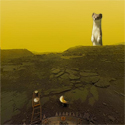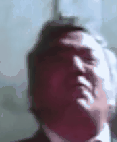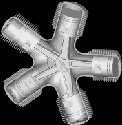|
So what's the secret to stacking images in Deep Sky Stacker? I've read tutorials and I've been having all sorts of trouble...most of the tutorials are pretty crap and assume prior knowledge. The website/software's help is the same. The first question I have is, how do I even set up the image to start with? There's a B/W slider in the top right corner to adjust what I assume is brightness/contrast, but I'm not quite sure what the objective is. Second, when I register images, what is the strategy for picking settings? Right now I just randomly click through the "Recommended settings" page, even though there are often multiple options...no clue what I'm doing there. The main trouble I'm having is trying to get it to recognize stars properly. Several times I've encountered this "only stacking one frame" issue. I've read that it's because it needs to detect at least 8 stars. But when I fiddle with the settings to the point where it sees 8, it seems that the "stars" never line up with what I can see as stars. I was trying to stack a bunch of frames of the Orion Nebula and it didn't recognize the stars in it as stars. I will say that through trial and error, I eventually got it to stack somewhat successfully, though the result was underwhelming and very noisy (though I'm sure that was because I got the dark and offset frames wrong, and I had zero flat frames). I think the final thing that got me was the color adjustment post-stacking. What on earth am I trying to achieve? All I got out of online tutorials was to fiddle with the sliders until the RGB curves looked the same. Also, what is the difference between Dark Flat Frames and regular Dark Frames? Do I need Dark Flat frames, or are those optional? Basically, I have no idea what the hell I'm doing here. Any pointers? I know there's a lot to it, so if anyone knows of a tutorial that's well written for a beginner, that would be great.
|
|
|
|

|
| # ? May 29, 2024 08:16 |
|
DaveSauce posted:So what's the secret to stacking images in Deep Sky Stacker? quote:The first question I have is, how do I even set up the image to start with? There's a B/W slider in the top right corner to adjust what I assume is brightness/contrast, but I'm not quite sure what the objective is. quote:Second, when I register images, what is the strategy for picking settings? Right now I just randomly click through the "Recommended settings" page, even though there are often multiple options...no clue what I'm doing there. quote:The main trouble I'm having is trying to get it to recognize stars properly. Several times I've encountered this "only stacking one frame" issue. I've read that it's because it needs to detect at least 8 stars. But when I fiddle with the settings to the point where it sees 8, it seems that the "stars" never line up with what I can see as stars. I was trying to stack a bunch of frames of the Orion Nebula and it didn't recognize the stars in it as stars. quote:I will say that through trial and error, I eventually got it to stack somewhat successfully, though the result was underwhelming and very noisy (though I'm sure that was because I got the dark and offset frames wrong, and I had zero flat frames). I don't have that, so I usually make a few adjustments before saving a 16 bit/channel TIFF and finishing in Photoshop. I slide the RGB sliders around until the sky background is relatively neutral, then play with the luminosity curves to suppress the background glow a bit. After that it's all Photoshop for me. quote:Also, what is the difference between Dark Flat Frames and regular Dark Frames? Do I need Dark Flat frames, or are those optional? Hope at least some of this can get you pointed in the right direction!
|
|
|
|
GutBomb posted:I know it's nowhere near the quality of photo that should be posted but here's my first experiment with the NexImage 5 solar system imager on my NexStar 4SE. I was stoked to see Jupiter as a giant white smudge. I would flip if I ever saw that with my own eyes. I know you guys said color wasn't going to be something I'd get with binoculars but how much would you need to spend on a scope to start seeing the good stuff?
|
|
|
|
smarion2 posted:I was stoked to see Jupiter as a giant white smudge. I would flip if I ever saw that with my own eyes. A bit (a few hundred dollars). Planets reveal the most colour, though some star clusters can be quite varied, and the brighter planetary nebulae can as well I think. "Deep sky" stuff like galaxies and other things do not have colours that can be seen with the human eye. The Hubble scope is in many ways, NASA's cruelest joke on the backyard wannabe.
|
|
|
|
smarion2 posted:I was stoked to see Jupiter as a giant white smudge. I would flip if I ever saw that with my own eyes. With planets you should be able to see colours with a basic dobsonian scope, but in order to get the really vivid colours of DSOs you see in photos, you're going to be ponying up $Texas for some sort of astrophotography rig. With naked-eye observing, most things are going to look like smudges and blurs, but it's still really cool when you know what they actually are.
|
|
|
|
That's good to know I would be happy with being able to make out Jupiter's Red spot or Saturn's rings. I assume I could do that with a cheapish scope?
|
|
|
|
smarion2 posted:That's good to know I would be happy with being able to make out Jupiter's Red spot or Saturn's rings. I assume I could do that with a cheapish scope? Yes* (*don't buy a cheap scope, you will hate it very quickly). Keep in mind that visual astronomy is very weather dependent. Seeing Saturn's rings can be done with a modest scope, as can the colour bands on Jupiter. Seeing distinct, separated bands of Saturn's rings or Jupiter's storm? Very clear, cold and still atmosphere required and a very good scope. Considerable luck and oodles of patience are essential. Typically you will be sitting at the eyepiece fine tuning focus and waiting for the 60 miles of atmosphere above you to sit still for a few seconds so you get some amazing detail for a moment. Then it will lose detail to gusts and movement. Rinse and repeat over a period of time and you will train your brain and eye to pick out more detail when the next still moment happens. Carth Dookie fucked around with this message at 23:50 on Jan 20, 2015 |
|
|
|
There are a few interesting sky events this week. On the 24th there is a triple eclipse on Jupiter (starting at 1:27am US EST) and on the 25th Uranus and the moon will be close enough together to be in the same FOV of binoculars, making it pretty easy to spot a planet that's normally not visible with the naked eye.smarion2 posted:That's good to know I would be happy with being able to make out Jupiter's Red spot or Saturn's rings. I assume I could do that with a cheapish scope? Saturn's rings are very clearly visible with my cheap 70mm refractor but the red spot is a somewhat smaller target. I can usually just see a few horizontal bands on Jupiter like the poster before posted as well as the 4 moons Galileo discovered. A cheap telescope will make you itch to buy a more powerful one though.
|
|
|
|
Vladimir Poutine posted:There are a few interesting sky events this week. On the 24th there is a triple eclipse on Jupiter (starting at 1:27am US EST) and on the 25th Uranus and the moon will be close enough together to be in the same FOV of binoculars, making it pretty easy to spot a planet that's normally not visible with the naked eye. There's also a (relatively) large asteroid flying past Earth on the 26th, about 3 lunar distances away. Should be visible in binoculars from what I hear.
|
|
|
|
Luneshot posted:There's also a (relatively) large asteroid flying past Earth on the 26th, about 3 lunar distances away. Should be visible in binoculars from what I hear. Yep! Should peak at around 9th magnitude, and should be relatively easy to spot if it's dark where you live around 0600UT. It'll be skimming past the Beehive Cluster, moving at 2 arcseconds per second across the sky, which works out to the angular diameter of a typical medium-sized crater on the Moon every 30 seconds. If you've got a telescope you'll actually be able to see it moving in real time against the stars. Right now I'm kind of torn about how I want to go about taking pictures of the asteroid. Right now I'm leaning towards a 70mm widefield shot every minute or so for about 3 1/2 hours to make into a movie. But I also kind of want to futz around with DSLR photometry and do a project to measure the asteroid's light curve and determine a rotation rate. The only problem is that I'd be wasting my time if it's an ultra-fast rotator and takes under a minute to spin, because I'm going to need somewhere between a 5-10 second exposure to even pick it up. At that rate my imaging method wouldn't be too good at picking out features light curve, because I'd only get 6 shots per rotation, and the low sampling rate would leave me prone to aliasing.
|
|
|
|
smarion2 posted:I was stoked to see Jupiter as a giant white smudge. I would flip if I ever saw that with my own eyes. Sorry to disappoint you but it didn't look like this through the scope to the eye. It was just a bright white disc with 2 very slightly darker bands. It took taking 36 split second exposures and then stacking and processing those images to get it to look like this. With a bigger scope you can see more details.
|
|
|
|
GutBomb posted:Sorry to disappoint you but it didn't look like this through the scope to the eye. It was just a bright white disc with 2 very slightly darker bands. It took taking 36 split second exposures and then stacking and processing those images to get it to look like this. Not disappointed I'm really just starting to get into this so I don't know what to expect what you are able to see with your eyes and what is photography. If I'm ever able to look into a scope and see Saturns rings or even a somewhat colored Jupiter I'd be pretty happy.
|
|
|
|
smarion2 posted:Not disappointed I'm really just starting to get into this so I don't know what to expect what you are able to see with your eyes and what is photography. If I'm ever able to look into a scope and see Saturns rings or even a somewhat colored Jupiter I'd be pretty happy. The picture shown is roughly what Jupiter would look like in a decent scope in moderate conditions, except imagine it being a quarter the size of your pinky nail. Honestly the best thing to do is find your local astronomy organization (check nearby universities) and see when they are having a public viewing night or star party. With any luck you'll have a chance to check out a few different types of scopes and see what can be seen with them.
|
|
|
|
darth cookie posted:The picture shown is roughly what Jupiter would look like in a decent scope in moderate conditions, except imagine it being a quarter the size of your pinky nail. Great idea I know what I'm doing this weekend!
|
|
|
|
About a month ago, I decided to order a pretty simple 70mm refractor scope (Celestron Travel 70) that I've been using pretty consistently. It came with 10mm and 20mm eyepieces, and I ordered a 4mm for about $12 on Amazon. I also ordered a 2x Barlow, which combined with the 4mm eyepiece just about reaches the useful magnification of my scope. I've mostly been taking a look at the moon, the Lovejoy comet, and Jupiter and live in a pretty poor area for light pollution (just a few miles outside of Philadelphia). I've been looking at Jupiter consistently and it's great to see some of the red and white cloud bands showing up at 100x or so. I stayed up really late this last weekend and decided to go out and take a look at Saturn after it rose just after about five in the morning and was absolutely blown away. I could see the planet and the rings separately, and the whole thing looked fantastic. Needless to say, now I'm hooked and want to get something that will allow a little more convenience as well as a later aperture. I have my eye on the Celestron NexStar 130 SLT, but it's a lot of money and I'm not entirely sure about aligning the mirrors myself. Every review site I can find appears to recommend the NexStar 130 pretty highly, and having a GoTo mount and a decent-sized aperture is really appealing to me. Anybody have any experience with it, specifically? I would like to take some photographs with my Nikon D5100, but primarily want to use it for viewing. I can't really justify going much over $400 for what right now is just a bit of a hobby.
|
|
|
|
Maybe an odd question, but for post-processing do you use Photoshop Elements or Photoshop Lightroom? All I have right now is GIMP. I'm sure if I knew what I was doing I might be able to accomplish something with it, but from what I've gathered via googling everyone says stay the hell away from GIMP for astrophotography editing.
|
|
|
|
Amish posted:About a month ago, I decided to order a pretty simple 70mm refractor scope (Celestron Travel 70) that I've been using pretty consistently. It came with 10mm and 20mm eyepieces, and I ordered a 4mm for about $12 on Amazon. I also ordered a 2x Barlow, which combined with the 4mm eyepiece just about reaches the useful magnification of my scope. A Go-To mount would probably do okay with a camera attached, but you'd need to order an extra t-mount attachment to connect your camera and telescope together. The only problem I'd see is the camera adding a bit too much extra weight for the mount to cope with, but the D5100 body is fairly light so it probably wouldn't be a big deal. Obviously it's not going to make *amazing* images, but you should at least be able to take some decent pictures with that kind of setup. DaveSauce posted:Maybe an odd question, but for post-processing do you use Photoshop Elements or Photoshop Lightroom? I use Photoshop CS5, but Elements should have just about everything you need for processing stuff. Never used Lightroom, so I couldn't tell you if it was better. GIMP's not terrible, it's just kind of unintuitive. It's perfectly possible to do basic post-processing in it if you know what you're doing. Post-processing is mostly just playing with histograms, levels, and color balance. There's some fancier stuff that's easy to do in Photoshop that would be possible in GIMP, I think, but if you're getting a program specifically to do astrophotography processing I'd recommend getting something like PixInsight instead. Last night's picture of Comet Lovejoy:  Got clouds tonight, and looks like the forecast has them hanging around until at least Saturday night. Don't think I have too many clear nights left before the Moon starts to come back into the picture.
|
|
|
|
I use Lightroom, it's fairly fast and easy to adjust levels and stuff. I also use irfanview for batch conversions as well and simple 'batch-> auto level correct' functions. Let the pros chime in now :3 e;fb innit
|
|
|
|
look if you ain't processing your exposures using IRAF you're not doing it right (
|
|
|
|
Try Iris if you want a good laugh, or to stab yourself repeatedly in the face. I am going to try and take out my new travel rig somewhere dark on saturday night, see if I can't get a shot of the comet before it goes away. It's a pity I don't have a DSLR anymore. I might try it with my Sony CSC thing piggy backed on the Tak, I have a very widefield lens for it which might work, no idea how flat it is mind.
|
|
|
|
Venusian Weasel posted:if you're getting a program specifically to do astrophotography processing That's the problem. As of right now, I can't really justify spending a minimum of $80 on software specifically for astrophotography processing. If money were no object, I have read that PixInsight is the go-to software, but unfortunately I really can't justify that. Looks like it's about $350 USD. Maybe one day, but right now I would rather put that money towards a longer lens for my camera. Which is why I was asking about Elements vs Lightroom. By all accounts, lightroom seems to be more often recommended for general photography. But, I don't know if it's missing any specific features that Elements has that are better for tweaking astrophotography pictures. I'd like to avoid spending money on software right now, but if I do spend money I would rather buy something general purpose. With that, what exactly am I looking to adjust? I'm not a pro at image editing, so my eyes aren't really trained for noticing what colors are too high/low. In GIMP, I found the color level adjustments, but I don't really know what I'm doing with them. Frankly, if I can figure out how to do what I need with GIMP, then I have no reason to buy software. Separate question: Where's a good place to mount a telrad on a newtonian? My wife got me one for my birthday a few months ago and I have yet to mount it. I've seen lots of people mount it between the finderscope and the focus tube, but I don't have enough space there...so it's either above the finderscope, or below the focus tube, and both of those spots seem awfully inconvenient.
|
|
|
|
Venusian Weasel posted:Last night's picture of Comet Lovejoy: Finally got to see the comet last night. First with the binos (I have a 10x50 set that works great for casual observing) then that made me want to pull out the scope even though it was only 20ish degrees. Got a great look which basically looked like a dim blur, but it's pretty awesome anyway. I can't wait until I can put this scope's wedge mount to the real test once it gets warmer. Also, thanks for the wallpaper, dude. GutBomb fucked around with this message at 16:43 on Jan 23, 2015 |
|
|
|
I'm trying to add a finderscope to my Nexstar 6SE but the stock screws meant to attach the bracket to the mounting holes on the rear cell are too short. Does anyone know the specs of the screws so I get find a longer pair?
|
|
|
|
After weeks of clouded skies, I finally got to see Comet Lovejoy through my binoculars last night. The light pollution here is pretty significant so I had to drive into the hills to see it. Even there the light pollution impeded anything lower than, say, 20 degrees off the horizon. But it was nice to finally see Lovejoy Van Dis fucked around with this message at 20:06 on Oct 24, 2019 |
|
|
|
So I ended up ordering the NexStar 130 SLT and tried it out for a bit last night. Jupiter looked fantastic, and I also got a good view of Uranus, Betelgeuse, and a few other stars before clouds started rolling in. A couple questions, though: 1) I definitely knew that I would need to collimate this scope at some point. It seems to me that laser collimators are probably ideal, but seem to be pretty pricey. There's a $25 Celestron-made non-laser collimator on Amazon that I have my eye on, but wanted to know the pros/cons before I ordered it. 2) The telescope specifically says to use the finderscope in order to align it to three stars for the GoTo system, but when I tell it to go to specific targets, it's usually off by half the viewing radius of my 25mm eyepiece. Is it better to use the eyepiece rather than the finderscope for calibration? Does this mean my finderscope may not be mounted perfectly? And, as Venusian Weasel said above, the D5100 body is light enough that the motor doesn't appear to be working any harder with it attached.
|
|
|
|
Amish posted:So I ended up ordering the NexStar 130 SLT and tried it out for a bit last night. Jupiter looked fantastic, and I also got a good view of Uranus, Betelgeuse, and a few other stars before clouds started rolling in. For aligning with 3 stars I think the hand control says align with the finderscope first and hit enter, then fine tune with the eyepiece and hit align. Also, if your finderscope is off, align something in the center of the eyepiece then adjust the finderscope with the knobs to match.
|
|
|
|
Amish posted:2) The telescope specifically says to use the finderscope in order to align it to three stars for the GoTo system, but when I tell it to go to specific targets, it's usually off by half the viewing radius of my 25mm eyepiece. Is it better to use the eyepiece rather than the finderscope for calibration? Does this mean my finderscope may not be mounted perfectly? You should align the star based off of your eyepiece, not the finderscope. A trick is to defocus the star so it appears as a big donut instead of a small dot. This way it's easier to tell when it's centered in the eyepiece. BTW, the pro way to align is with 2-star autoalign. 
|
|
|
|
I'm sure is one of the questions that pops up once in a little while and I know you guys helped a dude with getting a first instrument just on the last page, but I was hoping for a bit more advice for myself about getting my first scope. Forgive me if this a bit tedious. I've been trying my best with getting to know the stars out in the sky as best I can. At this point I can at least confidently point out a few constellations and can spot the LMC/ SMC's given a little bit of time these days but I'm looking for something as a first to let me see a bit more than what I can with just the naked eyes. I'd like to get something so i can get a better view of stuff like the galactic core, the magellanic clouds, the peliades, orion nebula and so on since as I understand unless you have a pretty respectable setup with a CCD, you won't get amazing views of planets and the like anyway? I get the impression that reasonably modest set of binoculars is the way to go with something like this but I just have a few questions - - Is it like telescopes where you should at least accept that you'll have to spend a bit of money before you get something worthwhile? Part of my problem has been just too neurotic about which set to get exactly or is it more of a case of, just get something in your hands and get out there more on decent nights? - Is the exact magnification/objective combination in the lower end's ballpark matter a huge amount? Is a 7x50/7x35 going to be significantly different from a 10x50 in terms of views that you would get given everything else being the same? - What do you guys think of this set? Nikons seem to be pretty well regarded and it's on the very higher end of what I'm comfortable spending on a first set of binoculars. Or should i go nuts and buy something like this? or just order international for the aforementioned bushnells, which would work out to be about half the price of the above if I'm doing my money conversions right.
|
|
|
|
INTJ Mastermind posted:BTW, the pro way to align is with 2-star autoalign. 100+ point sample t-point run with the Sky-X. For those that absolutely, definitely, want to know whats pointing where. Not exactly handy in the field.
|
|
|
|
I finally had a night of clear skies last night, so I decided to try and work out the kinks on my camera setup on Jupiter. The results: I'm very happy with it as a first attempt, so far I've had very bad luck with eyepiece-projection photography. It probably would have been clearer if I waited until it was higher in the sky, and since it was over the east horizon I was shooting over the light pollution of the city. Also, I need to work on a more accurate alignment... I think that will just come down to practice.
|
|
|
|
Golden-i posted:I finally had a night of clear skies last night, so I decided to try and work out the kinks on my camera setup on Jupiter. The results: What gear did you use for that?
|
|
|
|
GutBomb posted:What gear did you use for that? Celestron 8" reflector on a Celestron Advanced VX mount, 6mm lens with 2x Barlow, Canon T3i body. This was just a single shot, I think I'll play around with stacking on some of my other exposures later tonight and see if I can't get anything clearer. I really wouldn't mind investing in a better camera for this in the long run, but I know how pricey they are.
|
|
|
|
Golden-i posted:Celestron 8" reflector on a Celestron Advanced VX mount, 6mm lens with 2x Barlow, Canon T3i body. This was just a single shot, I think I'll play around with stacking on some of my other exposures later tonight and see if I can't get anything clearer. Is that photo close to how it looks through the eyepiece to the eye?
|
|
|
|
GutBomb posted:Is that photo close to how it looks through the eyepiece to the eye? Yup. I checked it out that way first before setting up the camera gear. It actually seemed a little clearer through just the eyepiece, though.
|
|
|
|
Golden-i posted:Yup. I checked it out that way first before setting up the camera gear. It actually seemed a little clearer through just the eyepiece, though. I need a bigger scope. I want to see color, dammit.
|
|
|
|
I went outside to take the bins out before heading to bed, looked up at the sky then spent the next hour sat out in the school field next to the house. Lunar halo by tmarkuk, on Flickr Lunar halo by tmarkuk, on FlickrI don't think I've ever seen a halo that big, I needed a 16mm wide angle lens to fit it all in.
|
|
|
|
Dang, that's a nice halo! And great pic
|
|
|
|
I have a telescope question I am somewhat confused by. I must consider field of view rotation of two telescopes - an alt-azimuth reflector with 3 mirrors and an equatorial with 5 mirrors. The problem is that I'm not sure what is implied with field of view rotation - is it how I perceive the field rotation after it's gone through all the mirror, or is it how I rotate the telescope itself?
|
|
|
|
|
While I'm saving up for a tracking mount, I've been wondering if I should get a better tripod in the meantime. I got this cheap one right now http://www.amazon.co.uk/dp/B0096QWQBA/ref=pe_217191_31005151_3p_M3_dp_1 which I used for binoculars at first and it did the job. However the controls and lockups are terrible and once I got a camera it really shows that it's not very sturdy outside. I can't afford to spend a whole lot, so I'm looking in the £100-£200 range. I heard Manfrotto was a good and solid brand, so that's what I've been looking at, and so far I've looked at these two: http://www.amazon.co.uk/Manfrotto-BeFree-Compact-Lightweight-Travel/dp/B00COLBNTK/ref=pd_rhf_dp_p_img_3 http://www.amazon.co.uk/Manfrotto-Carbon-Fibre-Tripod-Q90-4-Section/dp/B0014YYFQG I can only assume they're a lot sturdier than the one I have now, especially the carbon fibre one. But if there are cheaper but comparable ones out there you guys could suggest, that'd be even better!
|
|
|
|

|
| # ? May 29, 2024 08:16 |
|
Finally have a clear sky and some time for photography while Comet Lovejoy's at a high altitude for the first time since the 23rd. Lucky Friday the 13th birthday wishes do come true!
|
|
|
























